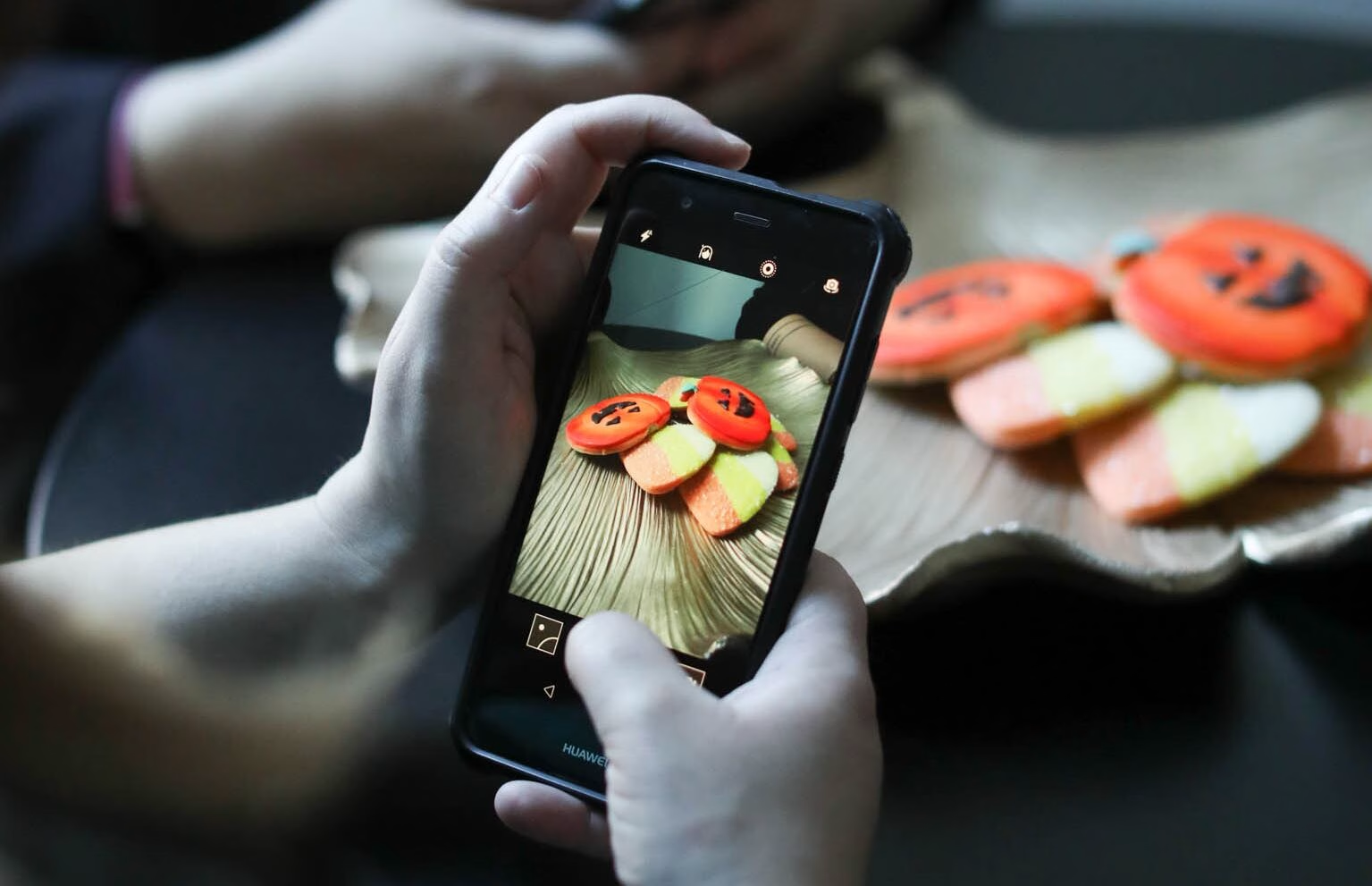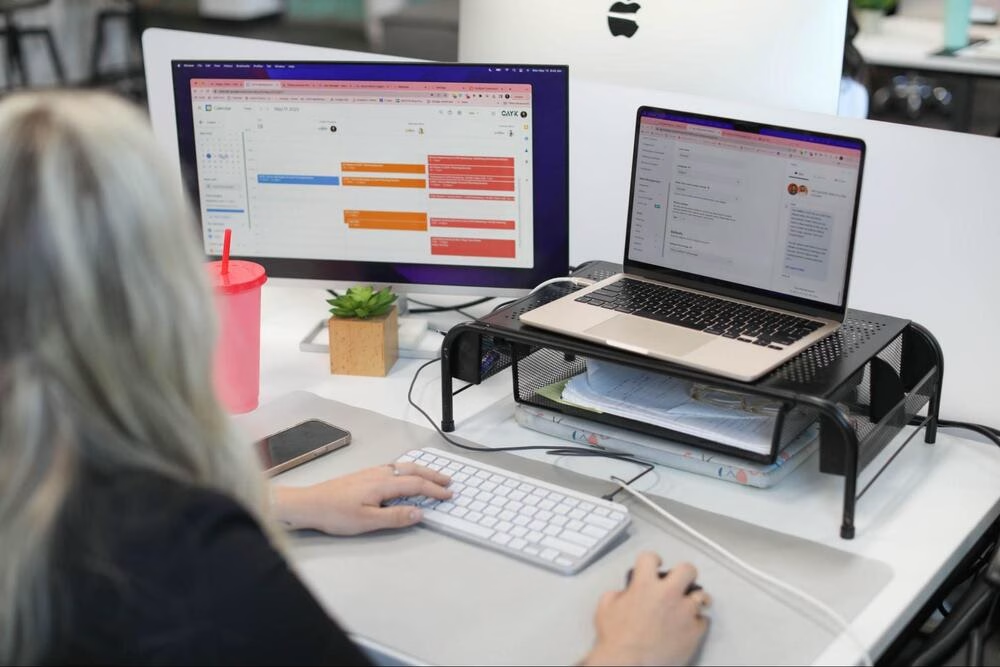Holiday traffic means nothing if your site can’t keep customers engaged. Seasonal sales spikes quickly fade if poor design leads to high bounce rates, low conversions, and no repeat business. The fix? Strategic web design updates built for speed, usability, and customer trust.
Here are the web design improvements that measurably improve customer retention during the holidays.
Prioritize Site Speed and Load Time
According to Google’s “The Need for Mobile Speed” report, the probability of a bounce increases by 32% as page load time increases from 1 to 3 seconds. By the 5-second mark, bounce probability jumps to 90%, meaning you could lose half your traffic before the page even loads.
To retain holiday shoppers, focus on these web performance updates:
Compress and convert your images. Large image files are one of the most common causes of slow websites. Use tools like TinyPNG or Squoosh to compress images without losing quality, and switch to next-gen formats like WebP that load faster on all major browsers.
Enable lazy loading. Lazy loading delays the loading of images and scripts until a user scrolls to that part of the page. This reduces the time it takes for your initial page content to become interactive, improving both speed and perceived performance.
Eliminate render-blocking assets. JavaScript and CSS that prevent your site from rendering quickly need to be deferred or minimized. Use asynchronous loading, combine scripts where possible, and prioritize critical CSS to speed up the paint time of your content.
Use a content delivery network (CDN). A CDN stores and serves your website files from locations geographically closer to your users. This reduces latency, especially during high-traffic periods like the holidays, and improves load times for global visitors.
Audit your server response time. Slow server performance can bottleneck even the most optimized site. Use tools like Google PageSpeed Insights or GTmetrix to assess your server’s time to first byte (TTFB). If it’s too high, upgrading your hosting or switching to a managed solution may be necessary.
Together, these performance upgrades directly impact how long users stay on your site and how likely they are to convert. During the holidays, every second counts, faster load times mean fewer bounces, more engagement, and higher revenue. Prioritize speed now so your site is ready before peak traffic hits.
Make Navigation Frictionless
Customers won’t fight to find what they need during the holidays. Every unnecessary click, scroll, or page load increases the likelihood of abandonment. To keep visitors engaged, your site navigation must be intuitive, visible, and designed for speed.
Start with a sticky top menu that stays visible as users scroll, keeping your key product or service categories within reach. For larger catalogs, implement mega menus that display multiple subcategories at once without forcing users to click deeper into the site. Pair this with predictive search that autocompletes queries and guides visitors to relevant results instantly. Add breadcrumbs to help users backtrack without confusion, and ensure every key landing page includes a clear, prominent call to action.
Streamline the buyer journey from the moment a visitor lands on your site to the final checkout. If users can’t find what they want within 10 seconds, they’re gone. Holiday shoppers expect efficiency and they reward it with conversions.
Use Persistent Shopping Carts
Cart abandonment is at its highest during the holidays, but one of the most effective ways to combat it is with persistent shopping cart functionality. If a shopper adds an item on mobile and returns hours or days later on a different device, that item should still be in their cart. To make this happen, use persistent cookies that store cart data for at least 30 days. Sync cart data across devices for logged-in users to ensure continuity.
You can also trigger reminder emails for users who have saved items but haven’t completed their purchase. These nudges re-engage intent without pushing for a hard sell. When a cart disappears, so does the customer’s buying motivation. But when it follows them from device to device, it keeps them on the path to conversion.
Optimize for Mobile Holiday Traffic
More than 70% of holiday traffic comes from mobile, yet many websites still prioritize desktop experience. That’s a critical mistake when it comes to customer retention. Mobile-friendly design isn’t optional, it’s the baseline.
Start by replacing intrusive pop-ups with slide-ins or embedded messaging to maintain visibility without disrupting the experience. Use large, tap-friendly buttons that are easy to interact with. Compress complex navigation into a simple hamburger-style dropdown menu. Your checkout flow should be no more than three steps, and all forms should support autofill and minimize the need for typing. Run your mobile site through Google’s Mobile-Friendly Test and make necessary adjustments before the traffic surge begins.
Design Holiday-Specific Landing Pages
Generic pages don’t perform during the holidays because they don’t match user expectations. Holiday-specific landing pages retain traffic by offering clarity, relevance, and urgency. Update headers to reflect seasonal themes, and use holiday-specific imagery to reinforce context visually.
Add limited-time promotions with countdown timers to create urgency. Bundle related products into sections with fast add-to-cart buttons. Create gift guides that help users navigate based on budget, recipient, or category. Display trust badges near shipping policies and return information to reduce doubt. Use heatmaps and session recordings to see how visitors actually behave, then adjust layout, copy, and CTA placement to optimize for retention.
Want to future-proof your landing pages beyond the holidays? Don’t miss our guide on Website Design Essentials for 2025 to stay ahead of evolving user expectations.
Shorten Checkout Flow
A long or complex checkout experience is one of the biggest causes of cart abandonment. Once someone clicks “Add to Cart,” your job is to remove all remaining friction. Always allow guest checkout so users aren’t forced to create an account. Cut form fields down to the essentials, no one wants to fill out unnecessary details.
Show real-time progress indicators like “Step 1 of 3” to help users track their progress. Offer multiple payment options, including Apple Pay, PayPal, credit cards, and Buy Now, Pay Later providers. Where possible, use browser autofill and auto-populate known fields. A fast checkout flow directly increases conversion and repeat purchase behavior.
Show Real-Time Inventory and Delivery Info
Holiday shoppers want instant answers, especially about availability and shipping timelines. If they can’t get it from you, they’ll bounce to a competitor. Display real-time stock levels next to product listings with messaging like “Only 3 left” to trigger urgency.
Include estimated delivery dates based on the customer’s postal code. Warn users about upcoming shipping cut-off dates to encourage timely purchasing. Add a live chat feature or chatbot to handle product or delivery questions on the spot. This kind of proactive communication builds trust and keeps shoppers moving forward in their journey.
These UX updates help convert, but getting found starts with visibility. See how a holiday SEO strategy can drive traffic to your most important product and offer pages.
Personalize the Experience
Holiday retention increases significantly when the shopping experience feels personal. Even simple personalization tactics can make users more likely to stay, engage, and return. Display recently viewed items on the homepage to help visitors pick up where they left off.
Show product recommendations in the cart based on user behavior or best sellers in related categories. Use dynamic headlines that reflect prior visits or browsing history. Incorporate location-based offers and banners for relevant regional messaging. When your site recognizes the user and adapts accordingly, it becomes a place they’re more likely to revisit.
Display Trust and Security Signals
During the holidays, many of your site visitors will be first-time buyers. If they don’t trust your site, they won’t convert. Use HTTPS encryption across every page and display a visible security lock in the browser. Make your return and refund policies easily accessible on product pages so users know they can shop with confidence.
Showcase real customer reviews with timestamps to prove legitimacy. Add familiar payment provider logos like Stripe or PayPal during checkout for added reassurance. Make your contact information and customer support links easy to find. These small updates reduce hesitation and turn cautious browsers into buyers.
Add Exit-Intent Triggers Strategically
Exit-intent popups can be useful when used correctly. Instead of annoying users, offer real value. Popups that trigger when a user shows signs of leaving, like moving their cursor toward the back button, can deliver last-chance offers that capture attention.
Try offering a promo code for a limited-time discount or a free gift with orders over a certain amount. Include a quick email capture option for users who want to return later. Avoid deploying these on mobile or during the checkout flow, where they are more likely to frustrate than help. The timing and content of the popup must be purposeful and aligned with user behavior.
Re-Engage Visitors Through Smart Retargeting
Retention doesn’t end at the close button. Smart retargeting brings shoppers back after they’ve left your site. Ensure you’re placing tracking pixels on all major landing and product pages. This allows you to build precise retargeting audiences across platforms like Google Ads and Meta.
Embed email opt-ins throughout your site, not just on the homepage. Use these to trigger follow-up sequences with tailored offers, reminders, or product recommendations. After a purchase, use upsell and cross-sell modules that carry through to email for future engagement. Every touchpoint should feel intentional and aligned with your user’s journey, even after they’ve left the site.
A well-designed retargeting funnel retains the user across channels, not just on the site.
Customer retention during the holidays doesn’t happen by accident. Every design decision affects trust, usability, and conversions. Small updates, like improving load speed or shortening forms, add up to big results.
Don’t just prepare for more traffic. Prepare to keep it.
Start with the updates above and optimize continuously throughout the season. If you want support from a team that builds websites that sell, not just look good, CAYK is ready to help.
Book a consultation today and turn your holiday traffic into lasting customer loyalty.
How useful was this post?
Click on a star to rate it!
Average rating 0 / 5. Vote count: 0
No votes so far! Be the first to rate this post.














